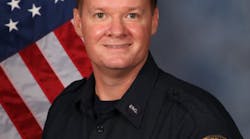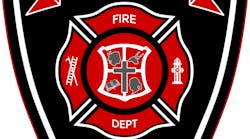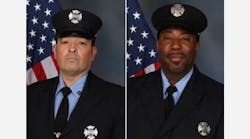In the past decade, 100 firefighters across the country have died while engaged in training, a NFPA study shows.
Sudden cardiac events were cited as the leading cause of deaths during training, the same culprit that is claiming on-duty firefighters.
"Training is a vital part of fire department operations, but it too often results in unnecessary death and injuries," NFPA researchers wrote, adding that in the past 29 years, 239 firefighters have died during drills.
Following their recent study focusing on training deaths from 1996-2005, the NFPA concluded: "Firefighter deaths during training are particularly needless. The purpose of training is to prevent deaths and injuries, and should certainly not be the cause of casualties...Eight of the 100 were recruits..."
Of the 100 victims, 47 were volunteers; 39 career; five state land management; four federal land management; two civilian members of the military; one pilot; one member of the military and one was an industrial firefighter.
The study showed that the majority of deaths (36) occurred during apparatus or equipment drills, while physical fitness exercises claimed 30 firefighters. Other activities included live burns, 14; underwater training, eight; classes or seminars, five; traveling to or from drills, six; and one person was shot during SWAT training.
Neither of the two firefighters killed in crashes while learning to drive tankers was wearing a seat belt. Investigators determined that one of the vehicles also had several defects.
Three died after being struck by vehicles, including one by a backing engine being driven by an operator with a suspended license; one by vehicle operated by a person under the influence of prescription medication and alcohol; and another by a speeding vehicle involved in the drill. Horseplay also was cited as a factor in that crash.
Two firefighters died after falling from open tailgates of pickup trucks, and another was hit while picking up equipment that had fallen off a fire truck returning from a drill.
The NFPA researchers suggested: "Motor vehicle crashes during training sessions and while traveling to or from...represent an area where ordinary precautions and attention to driving rules and road conditions should have an impact. Seat belts should be worn at all times in all vehicles."
They also said departments should review NFPA 1002, standards for fire apparatus operators, and make sure drivers understand the dynamics involved.
Of the 30 deaths during fitness training, 23 died of sudden cardiac arrest, three each to heat stroke and aneurysms and one from a disease associated with sickle cell trait. Thirteen of those firefighters collapsed while working out, and all were found to have significant health problems. However, the surveyors discovered that not all the personnel under 40 would have been required to take tests that may have detected their hidden cardiac issues.
Six of those cardiac arrest deaths occurred while candidates were taking pack tests for wildland firefighting qualifications.
Two recruits died during fitness training. In one case, investigators listed a number of errors, including no rest or water for more than an hour; dark clothing, an untrained instructor, bullying and no acclimatization for conditioning given the high heat and humidity. The other case involved an experienced runner collapsed after failing to drink water or take advantage of shade.
The NFPA study also found that 14 firefighters died during live fire training. Two died in a flashover during a search and rescue drill. One victim had only been in the department a week.
In another incident, an 18-year-old recruit playing a victim in a burning building died of smoke inhalation. The officer in charge was charged with negligent homicide. Investigators found there were no emergency evacuation ladders in place, no safety lines and no one knew about a sofa fire.
It was the first time the victim had used SCBA in fire conditions.
The NFPA also discovered several violations occurred during another exercise that left a recruit dead, and four others suffering heat-related problems. The investigation showed no safety officer or plan; no formal EMS plan, no RIT teams in place, and the fire environment was not monitored. Recruits were threatened with termination of they left the structure prematurely or were hurt.
The NFPA study also shows that the victims ranged from 17 to 74 with a median age of 43.
Prior to conducting a training exercise, commanders are encouraged to review various NFPA standards.
Researchers concluded: "Since training exercises should be conducted in controlled settings, they must be designed so as not to endanger the participants. This requires that recommended safety procedures be followed. That, in combination with competent instruction, should result in the level of safety necessary to protect lives."





